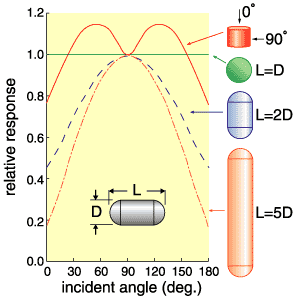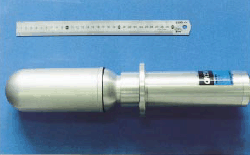| The absorbed dose of human organs and tissues changes according to the irradiation conditions. In addition, their radiation sensitivities are not same. So, it was very difficult to evaluate the radiation risk between different tissues and organs distributed in the body using a common scale. Under these circumstances, the concept of "effective dose, (E)" or "effective dose equivalent, (HE)" was introduced from the viewpoint of comparing radiation risk under a common criterion. These quantities are constructed to be proportional to the stochastic effects arising from radiation exposure to the human body and can be conveniently used for the practical evaluation of radiation risk, as a comparative index, in the field of radiation protection. It is difficult to directly evaluate these qualities from measurements because they are calculated from the specific dose absorbed in every tissue and organ and depend not only on the energy distribution but also on the angular distribution of the gamma ray field. So the quantities are usually calculated by using a conversion factor from the absorbed dose in air, which can be measured directly by a dose measuring instrument. Conversion factors, however, vary greatly according to the radiation energy and angular distribution incident to the human body. Therefore, it is generally very difficult to obtain accurate conversion factors for E or HE, because of the lack of precise information on the radiation field, such as the energy and directional distribution of the incident photon at the measuring point. JAERI has carried out the development of a radiation detector with the same energy and angular response characteristics as the human body, and a NaI(Tl) scintillation detector with a novel shape has been developed to realize direct measurement of E or HE for external photon exposures. This work solved the problem concerning the angular dependence, by considering a detector shape that satisfies the angular response similar to the human body. The optimum dimensions of the NaI(Tl) crystal for HE and E were determined respectively by a Monte Carlo simulation. The detector subject to HE was manufactured and tested. The angular characteristics of the developed detector indicate a fairly good coincidence with those of the theoretical values, HE. Together with an energy-dose conversion method, the so called "G(E) function method," it was possible to directly measure the effective dose (equivalent). |


